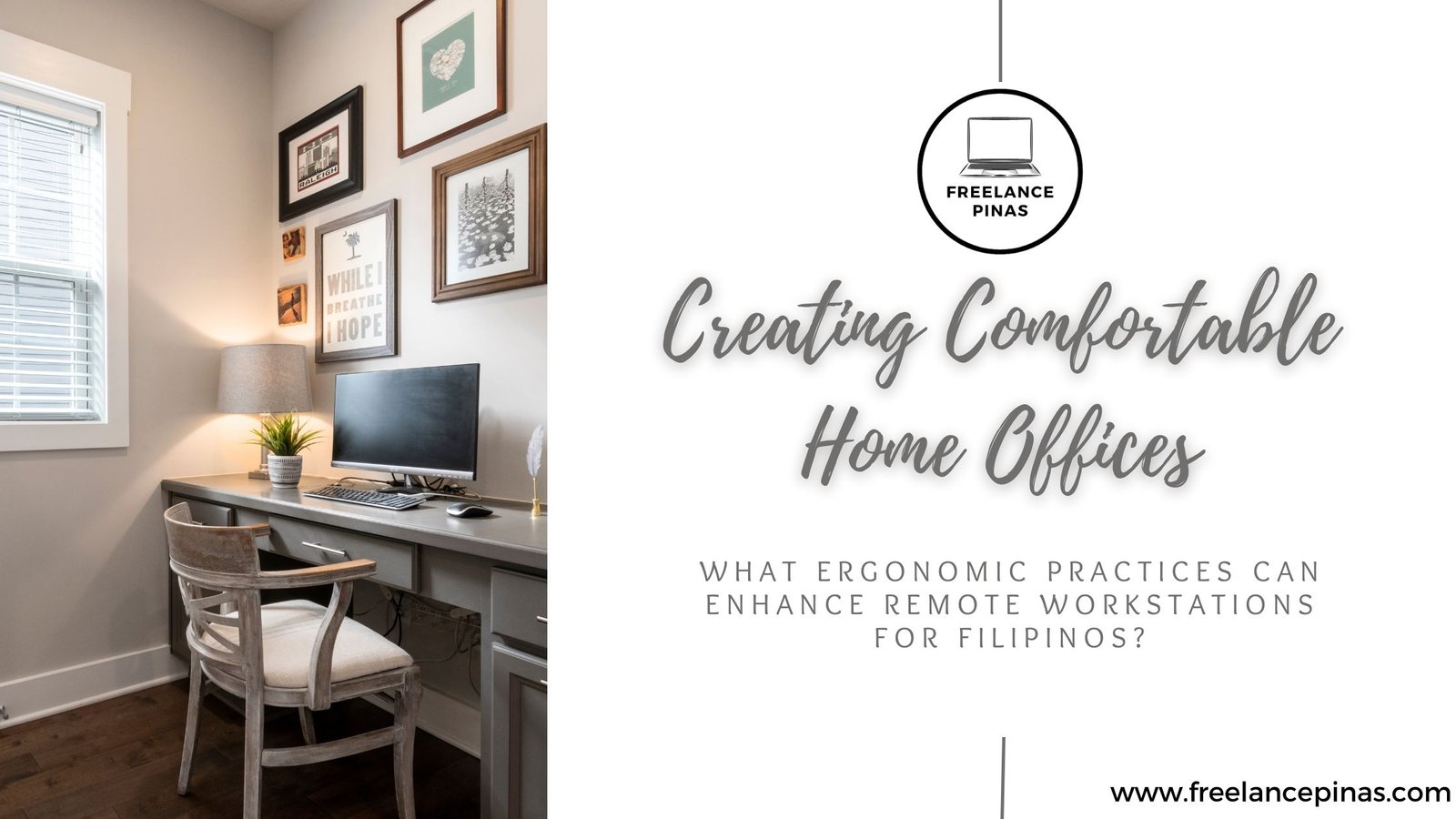In the dynamic landscape of remote work, ensuring a comfortable and ergonomic home office environment is paramount, especially for Filipino professionals. Implementing proper ergonomic practices not only boosts productivity but also enhances overall well-being. Here’s a comprehensive guide to creating ergonomic home offices tailored to the needs of remote workers in the Philippines.
1. Choosing the Right Furniture
Investing in ergonomic furniture is the foundation of a comfortable home office. Select a chair that provides lumbar support and promotes good posture. Opt for a desk with sufficient space for work essentials, ensuring the right height to prevent strain.
2. Prioritizing Proper Lighting
Natural light is beneficial for productivity and mood. Position your workstation near windows to maximize natural light. Additionally, use task lighting to illuminate your workspace adequately, reducing eye strain.
3. Setting Up an Ideal Monitor Placement
Position your computer monitor at eye level to maintain a neutral neck position. Adjust the monitor’s brightness and contrast to reduce eye fatigue. Consider using an external keyboard and mouse to create a more versatile setup.
4. Incorporating Standing Desk Options
Introduce versatility to your workspace with a standing desk or adjustable desk converter. Alternating between sitting and standing throughout the day can alleviate back pain and improve circulation.
5. Implementing Cable Management Solutions
Keep cables organized and out of the way to prevent tripping hazards and maintain a clean workspace. Consider using cable organizers or clips to manage cords effectively.
6. Integrating Ergonomic Accessories
Enhance your comfort with ergonomic accessories. Invest in an ergonomic chair cushion for added support, and consider using a laptop stand to align your screen with eye level.
7. Creating a Distraction-Free Zone
Establish a dedicated and clutter-free workspace to minimize distractions. This not only aids focus but also contributes to a more organized and aesthetically pleasing home office.
8. Taking Breaks and Stretching Regularly
Combat sedentary behavior by scheduling regular breaks. Incorporate stretching exercises to alleviate tension and promote flexibility. Simple stretches can be done within the confines of your home office.
9. Fostering Greenery and Personalization
Introduce plants to your workspace to enhance air quality and create a calming atmosphere. Personalize your home office with elements that inspire and motivate you, contributing to a positive work environment.
10. Prioritizing Mental Health and Well-being
Recognize the importance of mental health. Incorporate relaxation corners or meditation spaces within your home office. Encourage breaks to refresh your mind and maintain a healthy work-life balance.
By incorporating these ergonomic practices, remote workers in the Philippines can create home offices that promote comfort, productivity, and overall well-being. Striking a balance between functionality and personalization is key to cultivating a workspace that aligns with the unique needs and preferences of Filipino professionals engaged in remote work.
